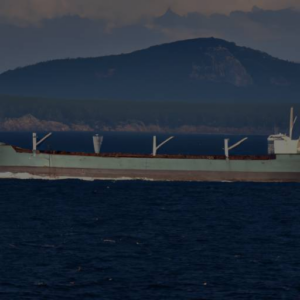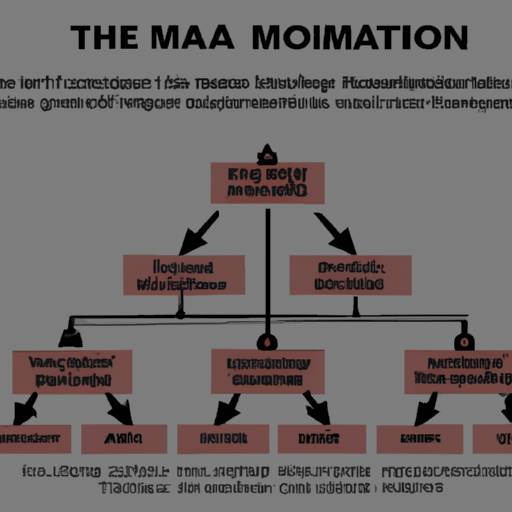This controversial event, which revolves around the sighting of Lee Harvey Oswald in Mexico City just weeks before the assassination of President John F. Kennedy, has sparked countless debates and raised doubts about its validity. Join us as we navigate through the murky waters of this conspiracy and shed light on the evidence, theories, and opinions that surround it.
Tom’s Fav Mexico City Fake Oswald Gear
Background of the Mexico City Fake Oswald Controversy
This theory suggests that the man who visited the Soviet and Cuban embassies in Mexico City, just weeks before the assassination of President John F. Kennedy, was not Lee Harvey Oswald, but an imposter. In this blog section, we will delve into the events and circumstances surrounding this controversy, shedding light on the timeline, individuals involved, and initial reactions to the claims.
The Alleged Sighting
On September 27, 1963, an individual claiming to be Lee Harvey Oswald visited the Soviet embassy in Mexico City. He sought a visa to travel to the Soviet Union, but was denied. Two days later, on September 29, the same man allegedly visited the Cuban embassy, seeking a visa to Cuba. Again, he was met with refusal. These visits became a significant part of the investigation into the assassination of President Kennedy, as they suggested Oswald’s potential involvement with foreign governments.
The Individuals Involved
Lee Harvey Oswald
Lee Harvey Oswald was the man accused of assassinating President Kennedy on November 22, 1963. He was a former Marine and had defected to the Soviet Union in 1959. Upon his return to the United States in 1962, he became involved in various political activities, including associations with pro-Castro organizations. Oswald’s alleged visits to the Soviet and Cuban embassies in Mexico City raised suspicions about his ties to these governments and his possible motives for the assassination.
Silvia Duran
Silvia Duran was a Mexican employee at the Cuban embassy in Mexico City during the time of Oswald’s alleged visits. She became a central figure in the controversy as she claimed to have interacted with Oswald during his visit. Duran was later arrested and interrogated by Mexican authorities, but she maintained her story, reinforcing the belief that Oswald had indeed visited the Cuban embassy.
Initial Reactions
The news of Oswald’s alleged visits to the Soviet and Cuban embassies in Mexico City sent shockwaves through the investigation into President Kennedy’s assassination. The revelation that Oswald may have been involved in clandestine activities with foreign governments fueled speculation about a larger conspiracy. However, as the investigation progressed, doubts and inconsistencies began to emerge, giving rise to the Mexico City Fake Oswald controversy.
Key Points
To summarize the important details and benefits of understanding the Mexico City Fake Oswald controversy, consider the following key points:
- The controversy suggests that the man who visited the Soviet and Cuban embassies in Mexico City was not Lee Harvey Oswald, but an imposter.
- The alleged visits raised suspicions about Oswald’s ties to foreign governments and his possible motives for assassinating President Kennedy.
- Silvia Duran’s testimony played a significant role in reinforcing the belief that Oswald had visited the Cuban embassy.
- The controversy fueled speculation about a larger conspiracy surrounding the assassination of President Kennedy.
Arguments Supporting the Mirage Theory
These arguments suggest that the sighting may have been a mirage or a fabrication. We will examine inconsistencies in the evidence, explore possible motives behind creating a fake Oswald, and consider alternative explanations that have been proposed.
Inconsistencies in the Evidence
One of the main arguments supporting the mirage theory revolves around the inconsistencies found in the evidence surrounding the Mexico City Oswald sighting. These inconsistencies include:
- Conflicting Descriptions: Witnesses provided conflicting descriptions of the person claiming to be Oswald at the Soviet and Cuban embassies. Some described the individual as tall with fair hair, while others mentioned a shorter man with darker features.
- Unreliable Audio Recordings: The audio recordings allegedly capturing conversations involving Oswald have been questioned. Some experts argue that the quality of the recordings is poor, making it difficult to conclusively identify the voices.
- Sudden Fluency in Russian: Oswald’s sudden ability to speak fluent Russian during his alleged encounters is seen as suspicious. Critics argue that it would be highly improbable for Oswald to acquire such proficiency in such a short period of time.
- Lack of Documentation: Despite extensive surveillance by intelligence agencies, there is a lack of official documentation to support the Mexico City Oswald sightings. This absence raises doubts about the authenticity of the events.
Motives Behind Creating a Fake Oswald
Proponents of the mirage theory propose several motives that could have led to the creation of a fake Oswald during the Mexico City sightings. These motives include:
- Intelligence Operation: Some argue that the CIA or other intelligence agencies may have orchestrated the mirage to gather information or manipulate public opinion. This theory suggests that a fabricated Oswald would serve as a useful tool to further their covert operations.
- Misdirection and Confusion: Creating a fake Oswald could have been a deliberate attempt to confuse investigators and divert attention from the real motives and individuals involved in the Kennedy assassination.
- Cold War Propaganda: The Mexico City Oswald sightings occurred during the height of the Cold War. It is argued that the fabrication of an Oswald connection to communist countries could have served as propaganda to fuel anti-communist sentiment.
Alternative Explanations
In addition to the mirage theory, alternative explanations have been proposed to account for the Mexico City Oswald sightings. These explanations include:
- Mistaken Identity: It is possible that the person claiming to be Oswald was indeed someone else who resembled him. This theory suggests that the witnesses misidentified the individual due to the similarity in appearance.
- Double Agent Involvement: Some argue that the Mexico City Oswald sightings were part of a double agent operation, where an individual pretending to be Oswald was used to gather intelligence or deceive foreign powers.
- Psychological Operation: The mirage theory could be seen as a psychological operation, aimed at creating confusion and uncertainty among both the public and potential conspirators.
Arguments Supporting the Reality Theory
Lets explore the evidence supporting the authenticity of the sighting, including testimonies from witnesses and any corroborating documents or photographs that exist.
Evidence of Authenticity
- Testimonies from Witnesses:
- Several individuals claim to have witnessed Lee Harvey Oswald at the Cuban Consulate and Soviet Embassy in Mexico City during the relevant period.
- These witnesses include embassy employees, intelligence officers, and other individuals present at the time.
- Their testimonies provide firsthand accounts of Oswald’s presence, supporting the reality theory.
- Corroborating Documents:
- Official documents, such as visa applications and surveillance reports, exist that mention Oswald’s activities in Mexico City.
- These documents provide a paper trail that supports the notion that Oswald was in the city during the alleged sighting.
- They lend credibility to the reality theory by substantiating the claims made by witnesses.
- Photographs:
- Although no photographs directly capturing the Mexico City Oswald sighting have been released publicly, some argue that such photographs may exist.
- If these photographs were to be revealed, they could potentially provide visual evidence of Oswald’s presence in Mexico City, further supporting the reality theory.
- It is important to note that the absence of publicly available photographs does not necessarily negate the reality theory, as there may be valid reasons for their non-disclosure.
Comparison of Arguments
To facilitate understanding and highlight the key points supporting the reality theory, we present a comparison table:
| Arguments in Favor of the Reality Theory | Counterarguments |
|---|---|
| Multiple witness testimonies confirm Oswald’s presence in Mexico City. | Critics question the reliability or credibility of these witnesses. |
| Official documents mention Oswald’s activities during the relevant period. | Some argue that these documents could have been falsified or manipulated. |
| Potential existence of undisclosed photographs that could provide visual evidence. | Skeptics argue that the absence of publicly available photographs weakens the reality theory. |
Evaluating the Controversy
In this section, we will critically evaluate the arguments from both sides of the controversy surrounding the assassination of President John F. Kennedy (JFK). By examining the strengths and weaknesses of each theory, we can gain a better understanding of the broader implications of this controversy on the historic events surrounding JFK’s assassination.
The Conspiracy Theory
The conspiracy theory suggests that the assassination of JFK was not the work of a lone gunman, but rather the result of a larger conspiracy involving multiple individuals or organizations. Proponents of this theory argue that the official explanation provided by the Warren Commission is incomplete and fails to account for certain inconsistencies and unanswered questions. Some key points raised by conspiracy theorists include:
- Multiple gunshots: Witnesses reported hearing more gunshots than can be accounted for by the official explanation of a lone gunman.
- Magic bullet theory: The trajectory of the bullet that purportedly caused multiple wounds to both JFK and Governor Connally has been heavily criticized for its implausibility.
- CIA involvement: Some conspiracy theories suggest the involvement of intelligence agencies, such as the CIA, in order to protect national security interests.
The Lone Gunman Theory
The lone gunman theory, as presented by the Warren Commission, asserts that Lee Harvey Oswald acted alone in assassinating JFK. According to this theory, Oswald fired three shots from the Texas School Book Depository, with one bullet causing both JFK and Governor Connally’s injuries. Key arguments supporting this theory include:
- Oswald’s actions: Evidence suggests that Oswald had the means, motive, and opportunity to carry out the assassination.
- Ballistics evidence: The Warren Commission’s examination of the ballistics evidence concluded that the trajectory of the bullets matched Oswald’s position.
- Lack of credible evidence: Despite the numerous conspiracy theories, no concrete evidence implicating a larger conspiracy has been presented.
Critical Analysis
To critically evaluate these theories, it is important to consider their strengths and weaknesses. Let’s examine some key points:
Conspiracy Theory – Strengths
- Raises questions: The conspiracy theory highlights inconsistencies and unanswered questions that warrant further investigation.
- Historical context: The JFK assassination occurred during a tumultuous period in American history, making the idea of a conspiracy seem more plausible to some.
- Expert opinions: Several experts, including forensic specialists and historians, have raised doubts about the lone gunman theory.
Conspiracy Theory – Weaknesses
- Lack of concrete evidence: Despite decades of investigation, no smoking gun has emerged to definitively prove a conspiracy.
- Complexity: The conspiracy theory often relies on intricate webs of connections and assumptions, which can make it difficult to substantiate.
Lone Gunman Theory – Strengths
- Official investigation: The Warren Commission, tasked with investigating the assassination, concluded that Oswald acted alone based on the evidence available at the time.
- Occam’s Razor: The lone gunman theory provides a simpler explanation, as it does not require a complex conspiracy involving multiple individuals.
Lone Gunman Theory – Weaknesses
- Unanswered questions: Some inconsistencies and gaps in the official explanation have left room for doubt and skepticism.
- Ballistics challenges: The magic bullet theory, in particular, has been heavily criticized for its implausibility.
Implications and Conclusion
Examining the controversy surrounding JFK’s assassination has broader implications for our understanding of historical events. By critically evaluating the arguments from both sides, we can encourage a more nuanced and informed discussion about this significant event. While the conspiracy theory raises important questions, the lack of concrete evidence and the simplicity of the lone gunman theory should not be ignored. It is crucial to approach this issue with an open mind, acknowledging the complexity of historical events and the limitations of our knowledge.
Unveiling the Truth: Evaluating the Evidence and Reaching a Conclusion
In conclusion, the blog post “Mirage or Reality? Analyzing the Mexico City Fake Oswald Controversy” has presented a thorough examination of the topic. By exploring the various aspects surrounding this controversy, readers have gained insight into the conflicting theories and evidence.
The post has highlighted the significance of critically evaluating the available evidence and considering the context in which it emerged. It has emphasized the importance of acknowledging the potential for misinformation and manipulation, especially in the realm of conspiracy theories.
With this information, readers are encouraged to form their own conclusions about the Mexico City Fake Oswald controversy. By engaging in independent analysis and research, they can make informed judgments and contribute to the ongoing discourse surrounding this intriguing historical event.
Ultimately, the blog post serves as a reminder to approach controversial topics with a critical mindset and to consider all available evidence before drawing definitive conclusions.





















